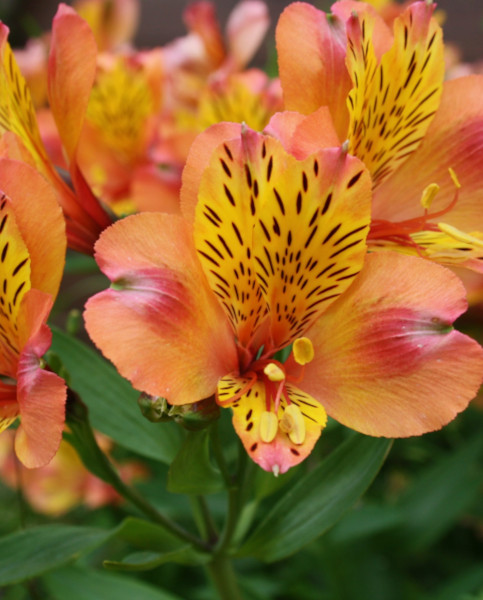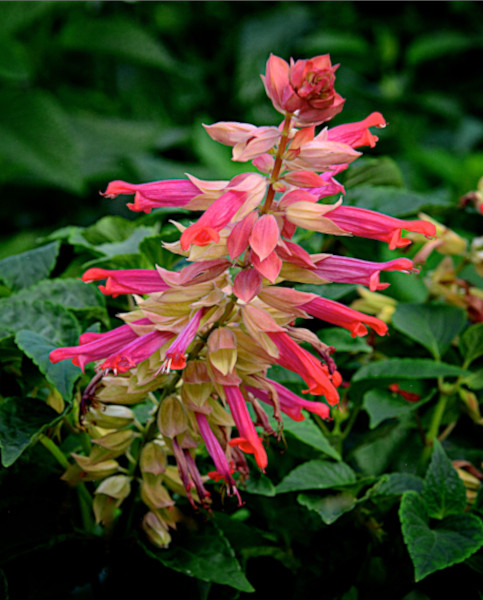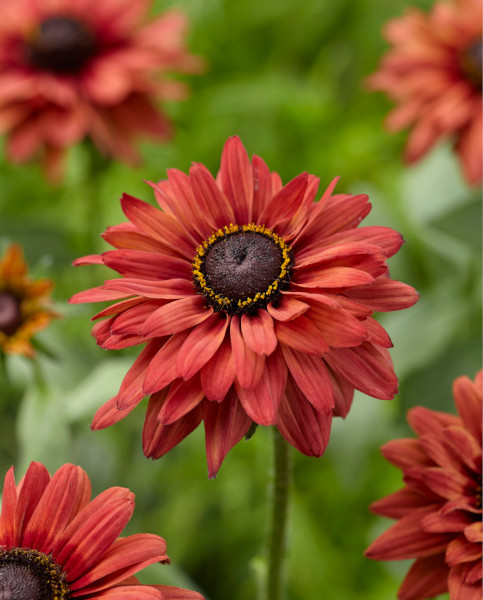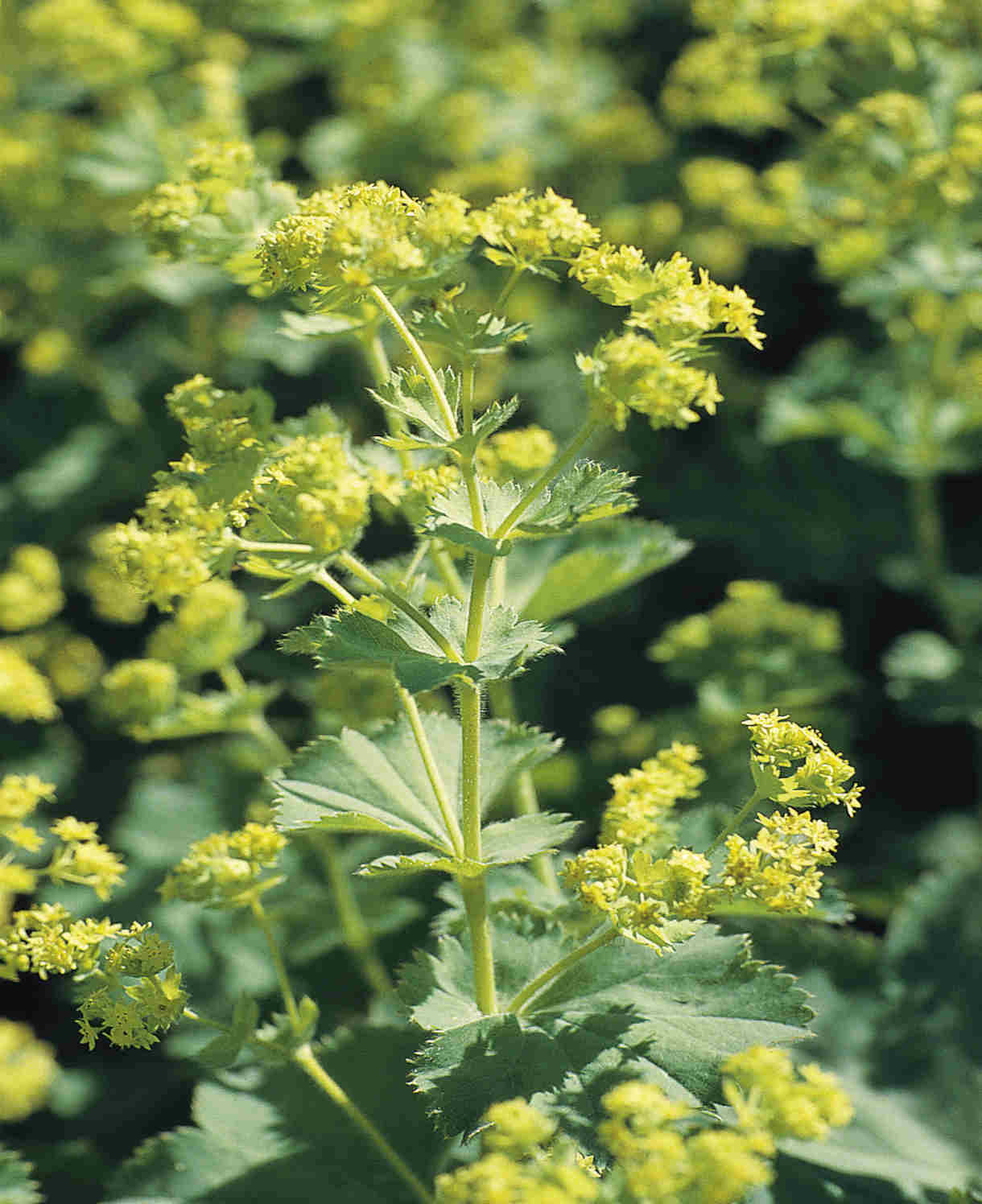How to grow Alstroemeria
Alstroemeria are loved by florists and gardeners alike for their exotic looking blooms which brighten up garden borders and pots and last weeks in the vase.
Native to South America and often referred to as Peruvian lilies, or Lily of the Incas, Alstroemeria have a long blooming period, usually flowering from June until October in a rainbow of beautiful colours and combinations. The flowers are borne in clusters at the top of straight stems and look like small lilies with freckled faces.
Some varieties such as the Inticancha Petite Collection have been bred to remain compact and look fabulous in a pot on the patio.

Key Information
Soil pH
Position
Hardiness


Where & when to plant Alstroemeria
Alstroemeria are best planted out in late spring once the soil has warmed up where they can settle into the ground quickly and flower in their first year.
Chose a warm, sheltered, sunny spot, in borders or containers. Plants should be spaced at least 50cm apart and planted in fertile, well-drained soil.
Perfect for attracting bees and other pollinators in a wild-life friendly garden. Also great as part of a cutting garden, so you have a good supply of stems for use in your indoor floral arrangements - remember that to ensure the promotion of new growth and more flowers, stems should always be pulled from the base of the plant rather than cut.
How to plant Alstroemeria
Find a sunny spot in the garden which is sheltered from strong winds for your Alstroemeria and dig a hole slightly wider and deeper than your potted plant. Add a good dose of organic matter such as well-rotted manure or homemade compost to the planting hole and a handful of grit in the bottom if drainage is poor.
Gently tease your Alstroemeria from its pot and carefully loosen the roots before placing in the hole with the top of the plant just below the surface of your soil. Fill in around the edges of the plant with garden soil and firm gently around the base of the plant being careful not to damage the crown. Water the plant in well and continue to do this regularly until established.
Alstroemeria may also be grown in pots of loam-based compost with added organic matter and some grit to aid drainage.

What to plant with Alstroemeria
Alstroemeria work well in many planting schemes due to their simple requirements. They look great in a colourful tropical garden, traditional cottage garden, and in modern planting schemes.
Taller varieties are best placed near the back of the border whilst shorter varieties can be grown near the front, or in a pot such as Hayloft’s Terracotta Bell Quilt Planter which looks fabulous on a summer patio.
Please contact our helpful and knowledgeable Customer Care Team at Hayloft if you need any further guidance or planting suggestions for your Alstroemeria.
Below are a few ideas for some great garden companions for these wonderful plants.
Tropical Garden
Cannas, Dahlias, Hardy banana, Fatsia, Salvia, Ferns, Palms, Ginger, Hosta
Cottage Garden
Roses, Foxgloves, Phlox, Antirrhinums, Cosmos, Scabious, Rudbeckia, Astrantia, Hardy geraniums, Geums, Penstemon, Monarda, Veronica, Japanese anemones, Antirrhinum, Alchemilla mollis, Bearded Iris, Lupin
Prairie planting scheme
Ornamental grasses, Verbena bonariensis, Echinacea, Phlomis, Achillea, Lavender, Allium sphaerocephalon, Olive



How to care for Alstroemeria
Pot grown Alstroemeria should not be allowed to dry out by watering regularly, particularly during dry spells of weather. Alstroemeria grown in the border only need watering during periods of drought. Be careful not to over-water your Alstroemeria plants as the roots can rot away and die beneath the soil in overly moist conditions.
Feed your Alstroemeria regularly once they begin to bloom in summer with a liquid feed which is high in potassium such as tomato feed or homemade comfrey feed. This will promote several flushes of beautiful flowers over the season.
Taller varieties of Alstroemeria should be staked to support the stems of multi-headed blooms. Insert a cane near to your plant and tie the stems to it with twine as it grows. Metal structures which the stems can grow up through are also suitable supports for Alstroemeria plants.
Alstroemeria die back in winter and re-emerge every spring. The crown of the plants should be mulched in autumn after they have finished flowering with a thick layer of compost. Remove the faded leaves and stems first.
New shoots of Alstroemeria are loved by slugs and snails. Protect early growth with organic methods of slug protection such as a thick layer of grit, eggshells, or wool pellets. Beer traps can also be effective at trapping these molluscs overnight. Avoid using slug pellets which are harmful to other garden wildlife.
Once established, Alstroemeria will spread in the garden and become even more floriferous.
summer to mingle with other plants, then bring lift the whole pot and move it in its entirety to a slightly protected area during the coldest months.
How to propagate Alstroemeria
The most popular and easiest way to create more Alstroemeria plants for your garden is by division. Every few years, larger clumps of Alstroemeria can be lifted from the ground and divided into several smaller sections.
This should be carried out in April, just as the new shoots begin to emerge.
If you are going to replant new sections of your Alstroemeria straight away in your garden, then dig planting holes and add organic matter and grit just as before. Alternatively, have pots with gritty compost ready to plant the divisions into which can be grown on or given to friends and family.
Dig carefully around your mature plant with a garden fork, slightly wider than the visible growth and lift out the whole clump. The fleshy roots and rhizomes are delicate so take care not to damage them. Gently separate the plant into several smaller sections. This may require slicing some of them apart with a sharp knife. Try to avoid damaging too many of the roots and tease them apart carefully with patience.
Plant your new Alstroemeria divisions into their new spaces or pots and water well until established.
A potted Alstroemeria can be lifted and divided in the same way or moved to a bigger container once it has outgrown its pot.




